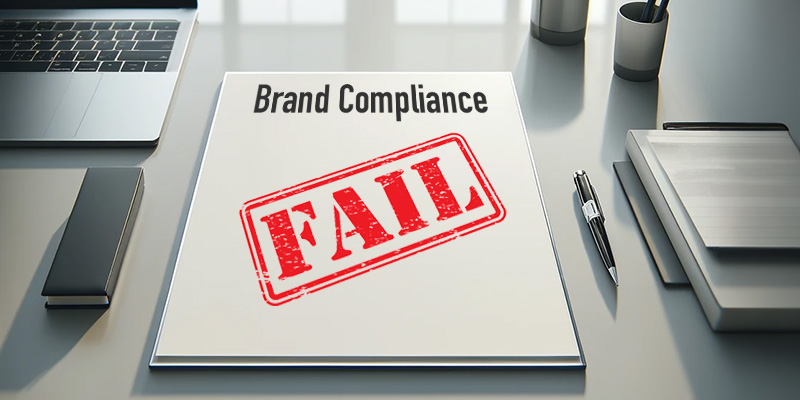
In fast-paced marketing, maintaining brand consistency across all channels can be difficult at best. Brands are increasingly reliant on digital assets to communicate with their target audience, making the management of these assets crucial. However, brand compliance often falls short, and the consequences can be significant, affecting brand recognition and customer trust.
The Challenges of Brand Compliance
Branding compliance fails primarily due to a lack of centralized control over the brand’s visual and verbal elements. This includes logos, colors, fonts, spacing and messaging that must remain consistent across all marketing materials. The rapid scale at which content is produced and distributed means that these elements are often modified without proper oversight.
- Decentralized Access: As teams grow and work across different regions, maintaining control over how assets are used becomes more challenging. In particular, enterprise level teams can sometimes grow before a proper Digital Asset Management system is put in place, so team members do not have a single source of truth in their world of brand compliance. Different teams often have varying levels of access to the latest brand guidelines and assets, leading to inconsistencies.
- Outdated Resources: Companies frequently update their brand guidelines, but if these updates are not communicated effectively across the entire organization with internal comms, teams may continue using outdated assets. It’s a best practice to keep all teams informed of any changes and to ensure they have easy access to the most current brand-compliant assets.
- Non-Designer Modifications: When non-designers are tasked with creating marketing materials, they may not have a keen understanding of brand guidelines. This can lead to unintentional deviations from established brand standards.
The Impact of Inconsistent Branding
Inconsistent branding can dilute a brand’s identity and confuse the audience. For consumers, inconsistency translates to unpredictability, which can erode trust. For businesses, this can mean a decline in the effectiveness of their marketing efforts and, ultimately, a decrease in return on investment.
The Solution: Lockable Templates and Workflow Approvals
To combat these challenges, Santa Cruz Software has developed BrandingUI, a DAM-connected templated asset portal that significantly enhances brand compliance. BrandingUI enables designers to create and lock templates that align with the latest brand guidelines. These templates can live on the shared digital asset management system for the business, and then the templates be handed over to non-designer teammates who need to update and alter materials without compromising brand integrity.
BrandingUI’s key feature is its ability to lock in certain design elements while allowing for edits to content. This ensures that any modifications adhere to brand standards, preserving visual consistency across all materials. For instance, a marketing or sales team member can update the text within a promotional flier while the logo, color scheme and font remain untouched. Further, as non-designer teammates update materials using BrandingUI, approval processes can be established so that the right stakeholders grant final approval before the new updated asset is published, printed or shared.
Because BrandingUI is integrated with the LinkrUI DAM connector, once the asset is updated then it can be quickly synced with the DAM where other team members can find and use it as they need. The DAM acts as the single source of truth in their world of brand compliance. The team that manages the DAM and its assets can remove outdated materials as brand guidelines are updated and old resources fall out of brand compliance.
This tool not only simplifies the workflow but also empowers teams to produce high-quality, compliant materials efficiently. By minimizing the risk of human error and the misuse of brand elements, BrandingUI helps maintain a strong, consistent brand image, fostering greater trust and recognition among consumers.
As businesses continue to navigate the complexities of digital marketing, tools like BrandingUI are essential for maintaining brand compliance. By ensuring that all team members, regardless of design expertise, are equipped to uphold brand standards, companies can project a coherent and reliable brand identity across all platforms.

